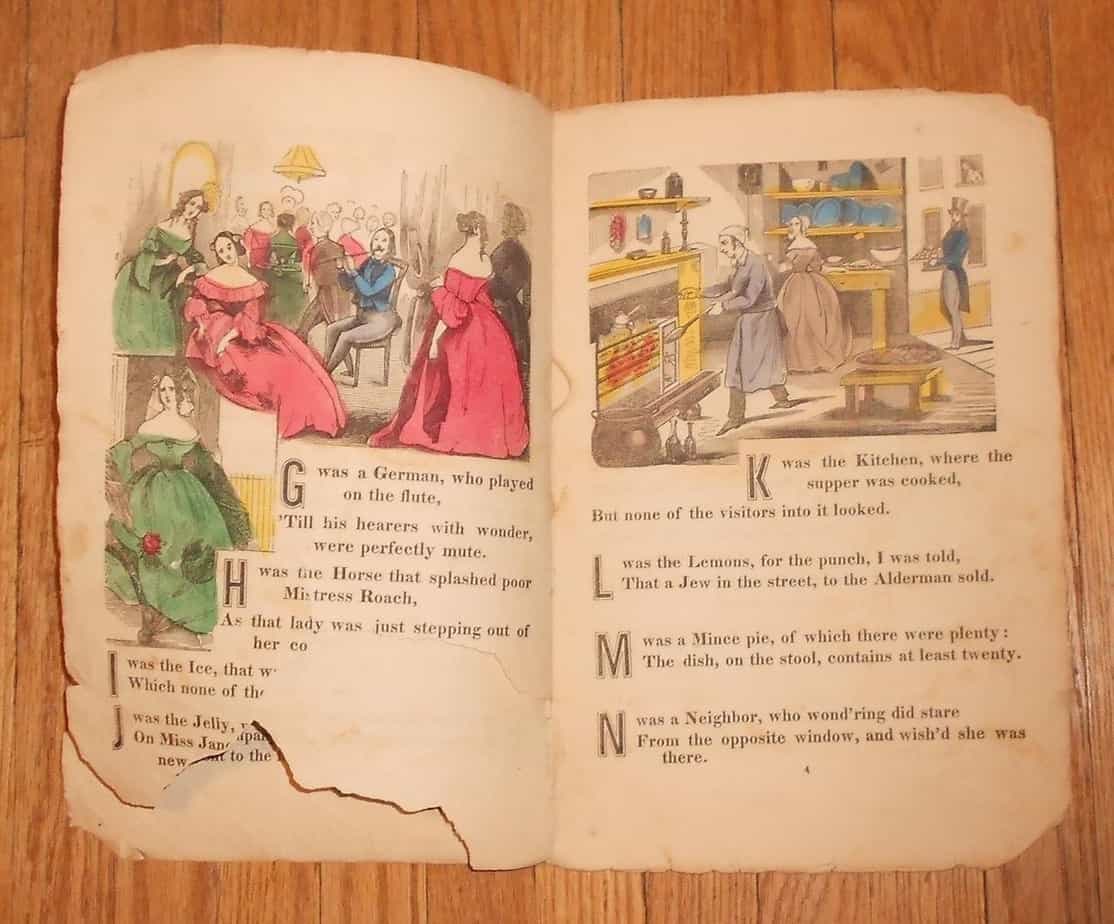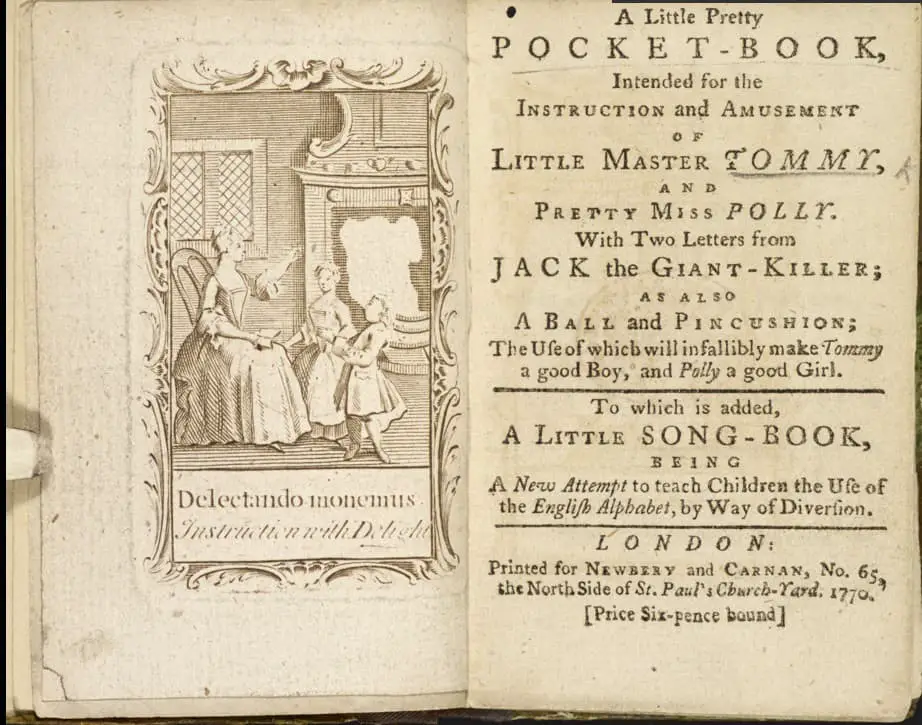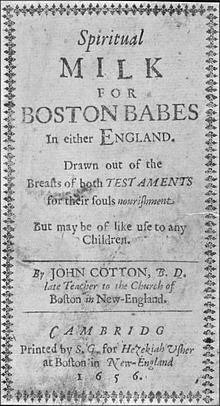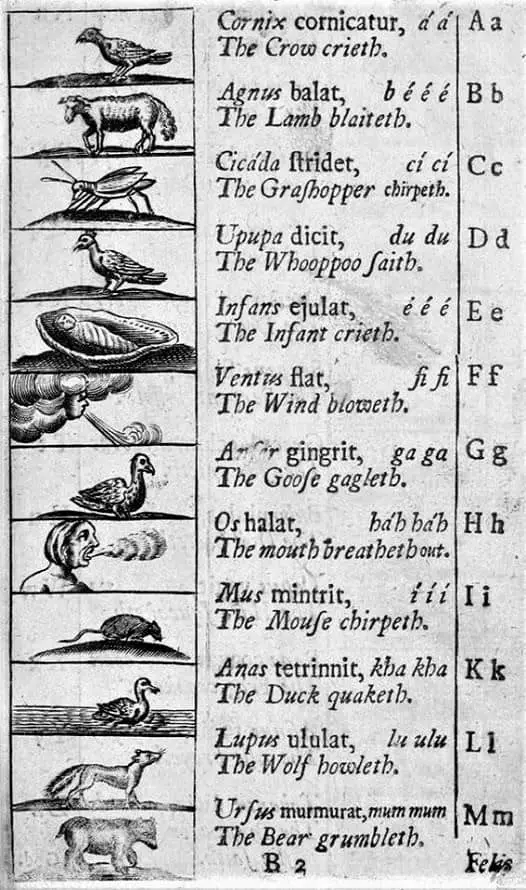It is difficult to be precise about when the modern picturebook first made its appearance but most authorities seem to be agreed that during the late nineteenth century picturebook makers such as Randolph Caldecott played a decisive role in transforming the Victorian toy book into something much more like the modern picturebook. Similarly, although many fine picturebooks were published prior to the 1960s, a number of factors converged around that time to enable publishers to produce and sell high quality picturebooks in larger numbers than before.
from the introduction to Reading Contemporary Picturebooks by David Lewis
1639
North America’s first printing press began operation in Cambridge, Massachussets, in 1639, nineteen years after the Mayflower landing. The Cambridge Press issued one or more broadsides before producing its first full-fledged book, the Bay Psalm Book, in an edition of 1700 copies. Fifty years later, the first children’s book of American origin issued from Boston. The New-England Primer was aimed at teaching young people their letters and setting them on the path to the good Christian life. Although few details of the book’s creation are known, it is generally believed to have been the work of an English bookseller, publisher, journalist and staunch antipapist named Benjamin Harris, who fled London for Boston in 1686 following the ascent of King James II to the British throne. Harris is thought to have compiled The New-England Primer between 1687 and 1690 and to have offered it for sale at his London Coffee House in Boston. The little book must have sold satisfactorily. In 1691 Harris advertised a second printing. The oldest surviving copy of the Primer dates from 1727 and was published in Boston by Kneeland & Green. Whether or not it is quite the same book as the one devised by Harris is unknown.
Leonard S. Marcus, Minders of Make-Believe
1646
If a recognisable children’s literature requires a recognisable childhood, and should not be totally shared with adults, then we might argue that English-language children’s books only emerged in the eighteenth century, with British publishers such as Mary Cooper and John Newbery. The first book ‘especially prepared for North American youth’, John Cotton’s Spiritual Milk for Boston Babes, was printed in London in 1646.
1657
The earliest picture book for children is sometimes thought to be Comenius’s Orbis Pictus, published somewhere around 1657. Open Culture believes it was published 1658.
Orbis Pictus is available via Project Gutenberg if you’d like to take a look.

1671
A Token for Children, Being an Exact Account of the Conversation, Holy and Exempary Lives and Joyful Deaths of Several Young Children by James Janeway appeared in England in 1671. Booksellers imported it to America a decade later.
This was a first because it starred children —specifically, the pious deaths of thirteen Christian girls and boys. (Melodramatic, heartrending stuff.)
1744
The first commercially produced children’s book printed in English was Newbery’s A Little Pretty Pocket Book. It was this book that defined the category of books for children:
In 1744 John Newbery, London bookseller and printer, published A Little Pretty Pocket-Book, the first of the illustrated “toy” books whose resounding success served equally to define the terms of a new literary genre and to confirm the emergence of a brisk middle-class market for juveniles. The frontispiece of Newbery’s first offering bore the motto “Delectando monemus. Instruction with Delight” — words by which the ebullient, hard-driving Newbery (“Jack Whirler” in Samuel Johnson’s approving Idler sketch) proceeded to publish for the new twenty-two years (while carrying on a second business in patent medicines). Acting on John Locke’s prescription of a half-century earlier, Newbery mixed entertaining and instruction in the books he printed and sold, showing by example that the two goals might indeed be made to dance on the same tune. He published serious-minded books for the young as well. Wading cautiously into the colonial market’s uncharted water, she advertised an assortment of the latter, more traditional little volumes as early as 1750 in the Pennsylvanian Gazette. Newbery and his successors continued to market their books in the colonies into the 1770s, until Revolutionary embarges made doing so impossible. By then, colonial bookseller-printers had already begun; if at first only in a small way, to make Newbery’s books their own.
Minders of Make-Believe, Leonard S. Marcus
This dominance by the English language has continued: In 1988, half the children’s books published in France were translations from English. (In contrast, France was the dominant influence upon German children’s books.) Today, the traffic between English and other languages remains virtually one-way. For more on that, see Dan Hade on Children’s Literature.
It came with merch. Boys got a ball and girls got a pincushion. This suggested that boys and girls would read the book differently. The gender bifurcation in book marketing continues to this day.
1824
In India, children’s books began in Calcutta with the establishment of the School Book Society by missionaries in 1817 and the earliest children’s book in Malayalam (spoken in Kerala), Cherupaithangalkku Upakaratham Kathakal (c. 1824), contained stories translated from English. (By the way, there’s only one copy in existence, and it’s in the British Library.)
1830s
The 1830s saw the first national distribution of a children’s picture book in America.
[S]ometime around 1825 the Boston shop of Munroe and Francis published its Mother Goose’s Quarto, or, Melodies Complete, a landmark work in that it represented the first American appearance in print of a great many oft he now-standard English nursery rhymes. At 128 pages, it was also the largest such collection then readily available in America. Nonetheless, the bibliographer and historian Everett F. Bleider concluded, this innovative work was not an “important book in itself” because as far as could be determined, it “was not reprinted, and it left no perceptible trace in the popular memory.” Less than a decade later, however, the same shop’s Mother Goose’s Melodies (1833), a distillation and refinement of the earlier book, achieved an “almost national…distribution…and it set off a chain of imitations, piracies, and similar collections that continues to the present. It was largely responsible for the adoption of Mother Goose in America as the supreme children’s poet, as opposed to her early British rivals, Gammer Gurton, Tom Thumb, Nurse Love-child, or others.
Minders of Make-Believe, Leonard S. Marcus
1840s and 1850s
Printing technology advanced to a point where colour reproduction was possible, but at this point children’s books were still black and white, woodcut engravings. When they were coloured, they’d been coloured by hand. Picture women and girls sitting along a workshop table. They were ‘hand-daubed’ rather than ‘hand coloured’, mostly in pasteboard covers, by a small number of publishers.
The Alderman’s Feast (1854) may be an early stand out example of a coloured picture book.

1911 and onwards
The first Chinese children’s writer was Sun Yuxiu, an editor of Commercial Press, whose story The Kingdom Without a Cat was written in the language of the time instead of the classical style used previously. Yuxiu encouraged novelist Shen Dehong to write for children as well. Dehong went on to rewrite 28 stories based on classical Chinese literature specifically for children. In 1932, Zhang Tianyi published Big Lin and Little Lin, the first full-length Chinese novel for children.
Wikipedia
1960s
The first picture book creator to give Black children a place in children’s literature was Ezra Jack Keats.
The Snowy Day was published 1962.



